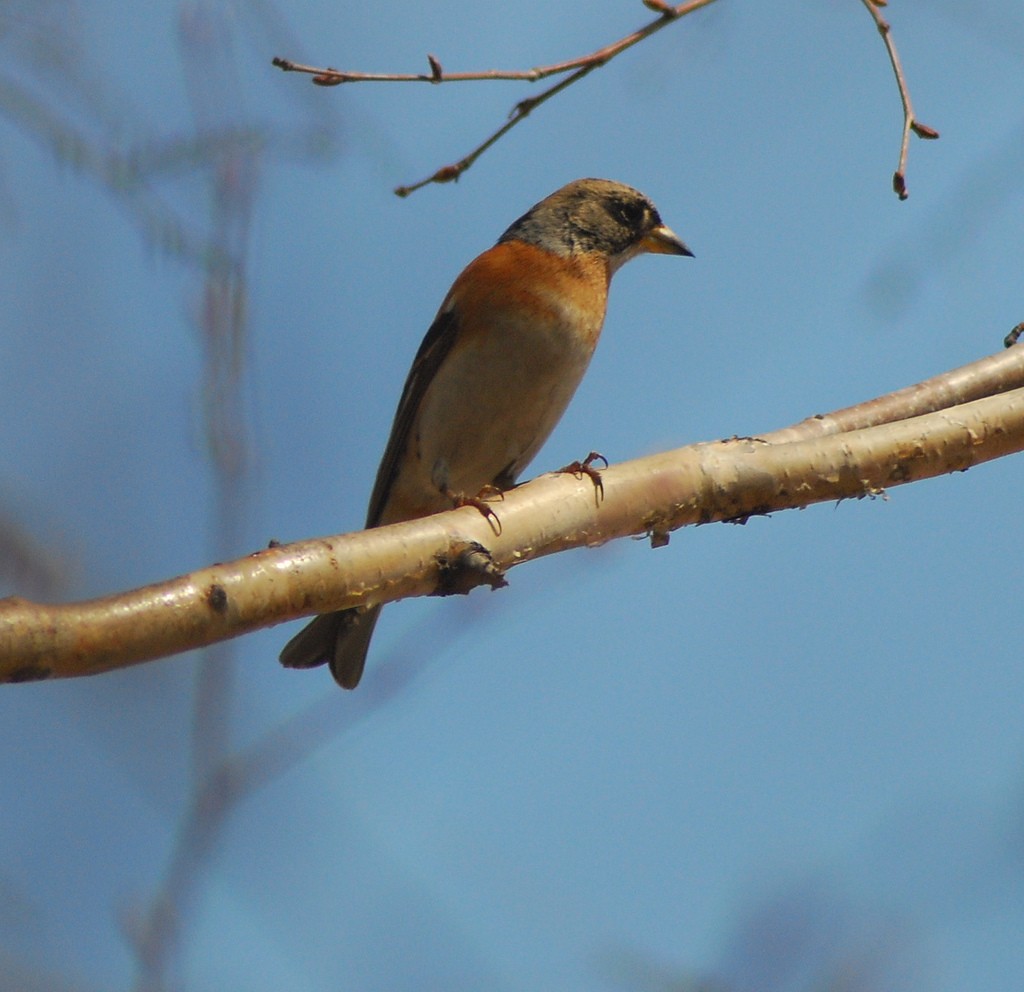Brambling
A species of Chaffinches and Brambling Scientific name : Fringilla montifringilla Genus : Chaffinches and Brambling
Brambling, A species of Chaffinches and Brambling
Botanical name: Fringilla montifringilla
Genus: Chaffinches and Brambling
Content
Description People often ask General Info
 Photo By shizhao , used under CC-BY-SA-2.0 /Cropped and compressed from original
Photo By shizhao , used under CC-BY-SA-2.0 /Cropped and compressed from original Description
A distinctive finch with a colorful breast, the brambling is often seen in woodlands. However, the bird will occasionally visit gardens with fruiting trees or bird feeders. While it has an attractive appearance, it’s different for its call. The small bird emits a high-pitched and nasal call, often with a slightly nasal buzz.
Size
14-16 cm (5.5-6.25 in)
Life Expectancy
14.8-15 years
Nest Placement
Tree
Feeding Habits
Brambling has a varied diet that primarily consists of seeds, fruits, insects, and larvae. This bird forages for food on the ground, often in flocks, and exhibits a preference for beechmast during autumn and winter.
Habitat
The brambling is predominantly found in birch and conifer woodlands, including those that mix with deciduous trees. Its breeding habitat extends to the northern tundra's edge, characterized by dwarf birch and willow scrub, and towards the south, it utilizes riverine alder forests. During non-breeding seasons, brambling frequents deciduous forests, small copses, shelter-belts with an affinity for beech and hornbeam trees, and agricultural field margins. It adapts to winter conditions by visiting bird tables in gardens. Habitually, it can be found elevating up to 3050 meters in areas like the Himalayas.
Dite type
Granivorous
General Info
Feeding Habits
Bird food type
Behavior
This species is almost entirely migratory. In Europe, it forms large flocks in the winter, sometimes with thousands or even millions of birds in a single flock. Such large gatherings occur especially if beech mast is abundant. Bramblings do not require beech mast in the winter, but winter flocks of bramblings will move until they find it. This may be an adaptation to avoid competition with the common chaffinch. Bramblings mostly eat seedsin winter, but insects in summer. It builds its nest in a tree fork, and decorates the exterior with moss or lichen to make it less conspicuous. It lays 4–9 eggs. 
Distribution Area
This bird is widespread, in the breeding season, throughout the forests of northern Europe and east across the Palearctic. It is migratory, wintering in southern Europe, North Africa, northern India, northern Pakistan, China, and Japan. It regularly strays into Alaska during migration and may continue as far south as the western United States. The global population of bramblings is about 100 to 200 million, with a decreasing trend. Open coniferous or birch woodland is favoured for breeding. 
Species Status
Not globally threatened.